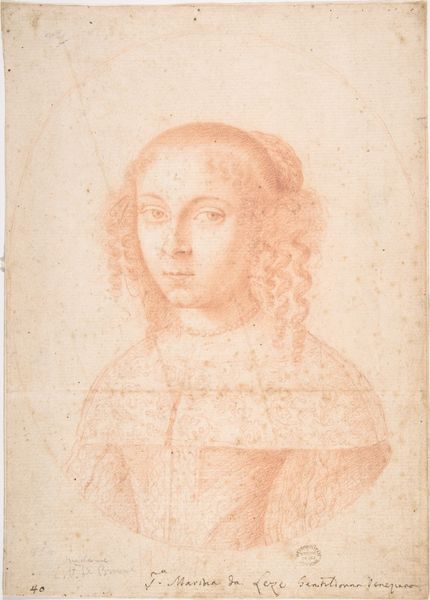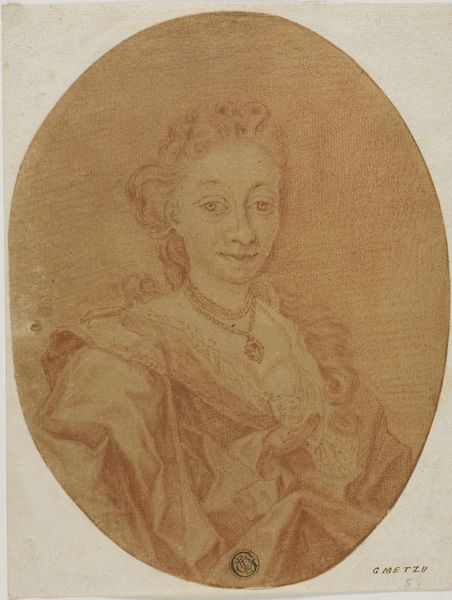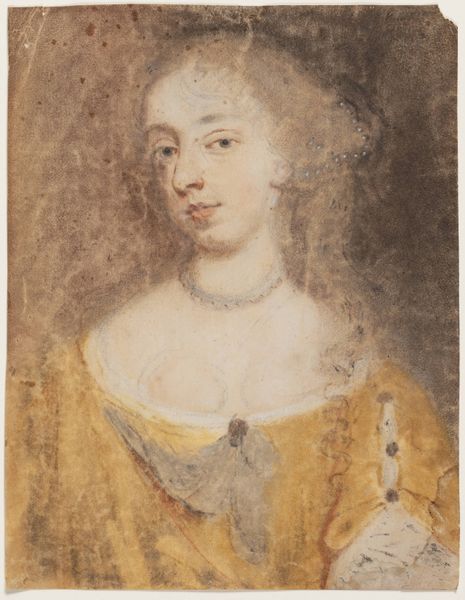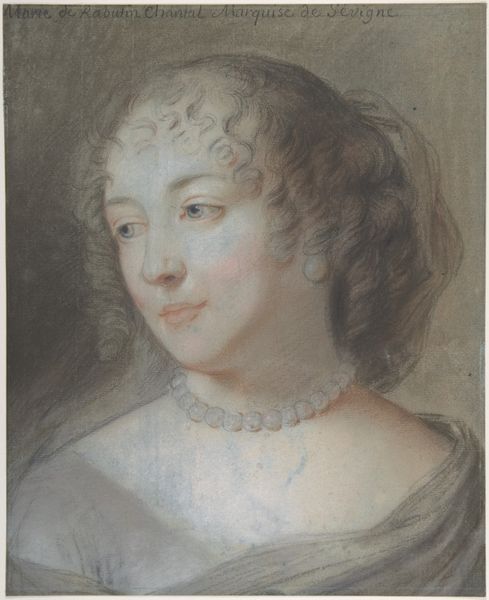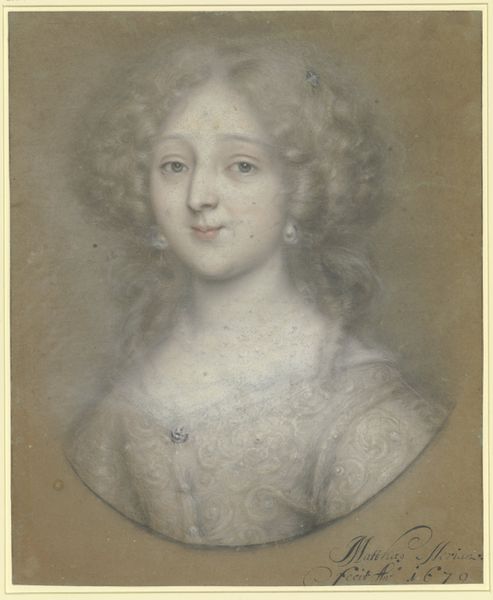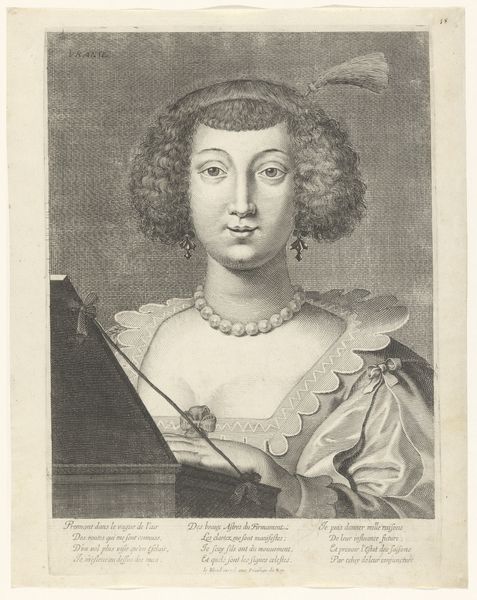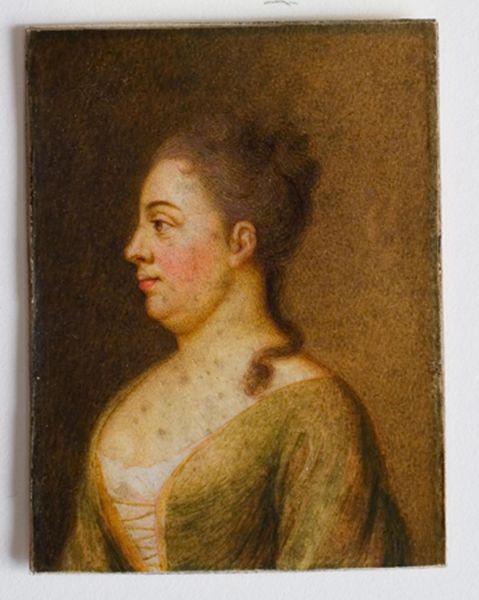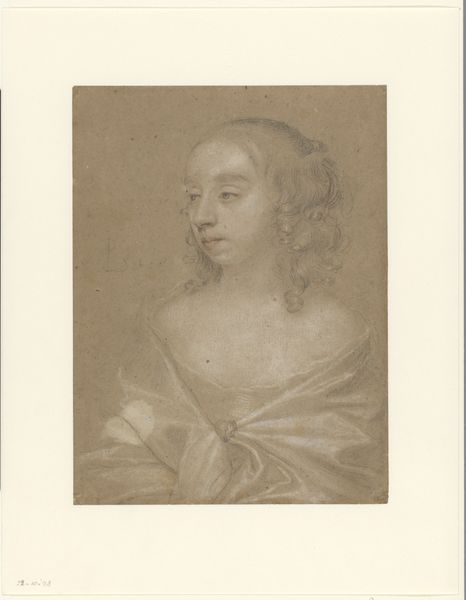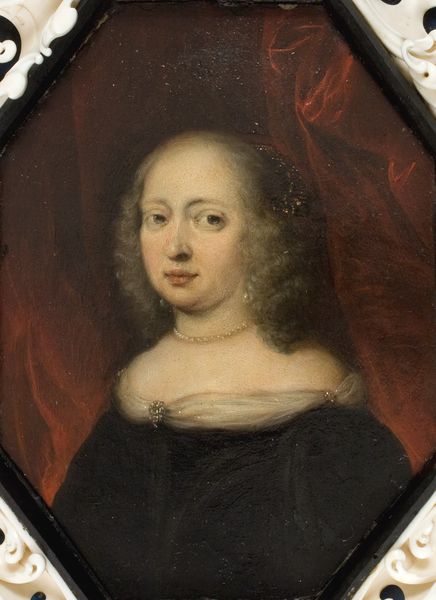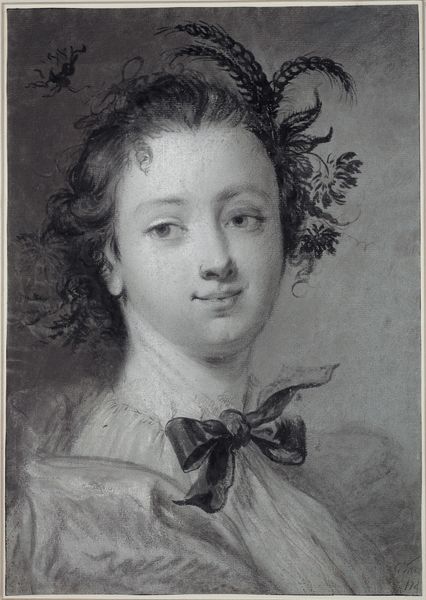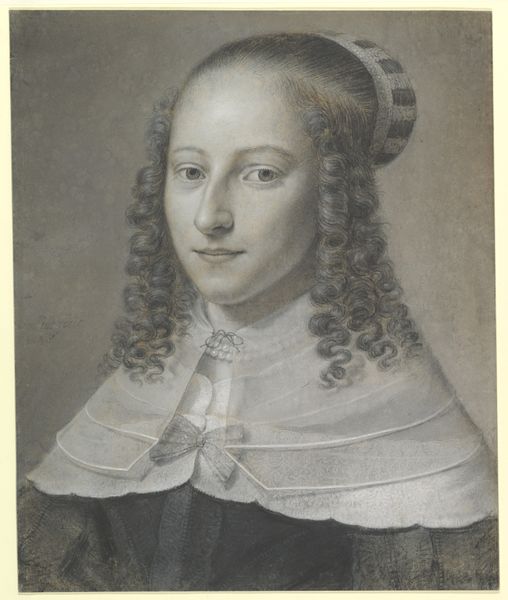
Head and shoulder portrait of a lady with earrings 1615 - 1690
0:00
0:00
drawing, charcoal
#
portrait
#
drawing
#
baroque
#
charcoal drawing
#
oil painting
#
portrait drawing
#
charcoal
#
academic-art
#
portrait art
Dimensions: 244 mm (height) x 196 mm (width) (bladmaal)
Curator: Let's spend some time reflecting on this intimate portrait drawing, “Head and shoulder portrait of a lady with earrings,” attributed to Richard Gibson, likely created sometime between 1615 and 1690. What is your initial take? Editor: A quiet solemnity strikes me immediately. There's a pale luminescence, almost ghostlike, despite the amber fabric draped across her shoulder. The pearl earrings and necklace feel like deliberate signals…but to what end? Curator: Pearls, throughout art history, are multifaceted symbols. On one hand, they represent purity and innocence; however, consider the woman portrayed here. During this era, a portrait wasn’t just a depiction but also a performance of social status and a negotiation of power dynamics. Who do you think was this artwork originally for, what does it represent about a social narrative that no longer prevails? Editor: Precisely. The pearls signify more than simple virtue. In the collective visual lexicon of the time, they denoted wealth and access – tools wielded in a society deeply stratified along gendered lines. Perhaps this was commissioned by a suitor, or maybe the sitter was performing a gentle authority for future generations of her family? Curator: We can assume with relative certainty that she held at least some kind of financial privilege considering what has remained through her legacy and image today. I see a fascinating tension: she's presented in a seemingly modest manner yet adorned with clear markers of affluence. Was this supposed to telegraph her humility alongside her power, something like "I have status but am virtuous nevertheless"? How was it conceived as a self image during a specific historic cultural moment? Editor: An apt interpretation. Note how the charcoal seems deliberately softened, almost blurring the features. It gives her an ethereal quality, reinforcing that notion of distanced authority—both present and yet somehow untouchable. What purpose would she serve now for modern audiences? What does it imply that we see these older depictions within this contemporary setting? Curator: The symbolism persists; that striving for grace amidst constraint, performed self-image, wealth’s ever-complicating role...It continues to resonate for modern women as they navigate those same spaces even today, albeit often in very altered circumstances. We learn not only of past representations, but we evaluate ourselves alongside those representations of the past and project new values of social critique to better evaluate them for tomorrow. Editor: An insightful lens through which to appreciate it! This drawing certainly continues to spark new ways to view these older portrayals of power and their symbolic weight for the contemporary world.
Comments
No comments
Be the first to comment and join the conversation on the ultimate creative platform.
